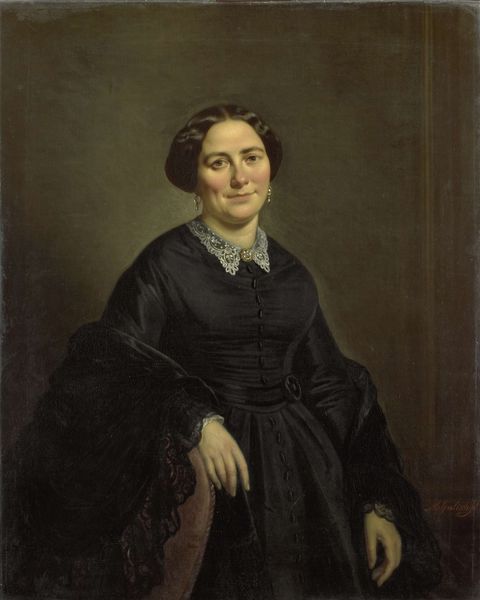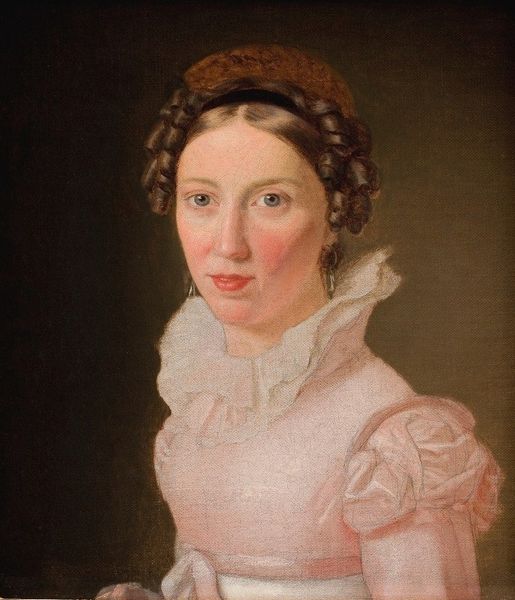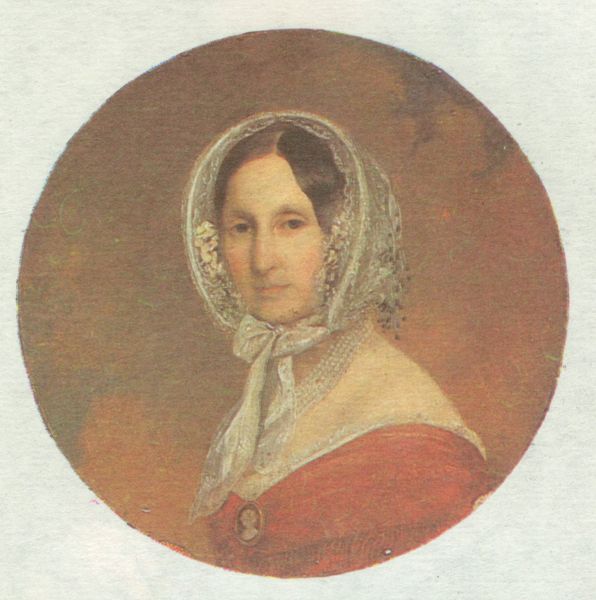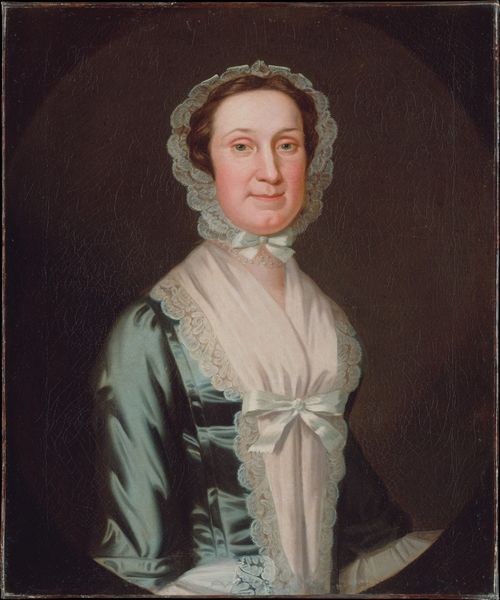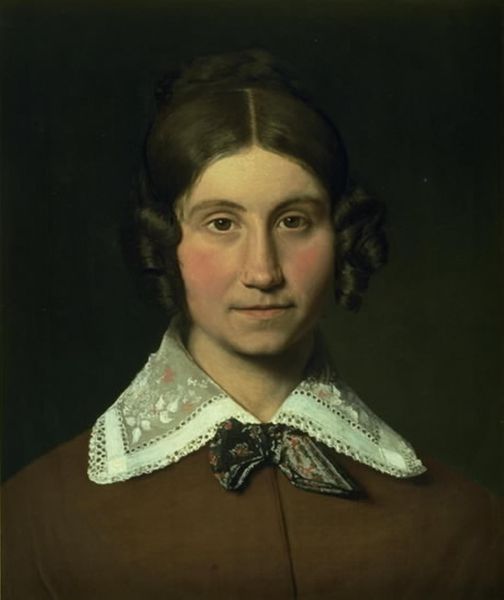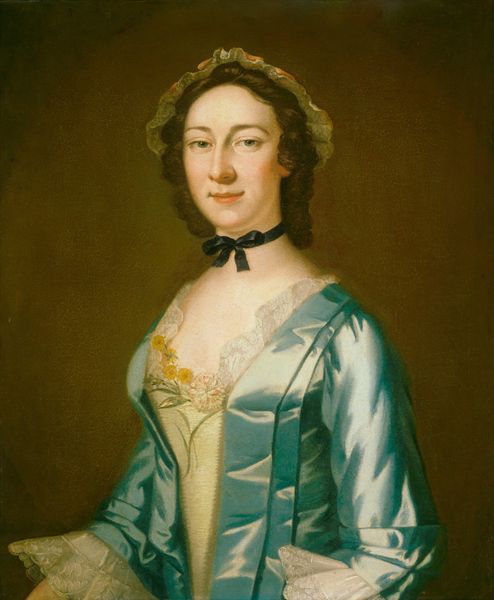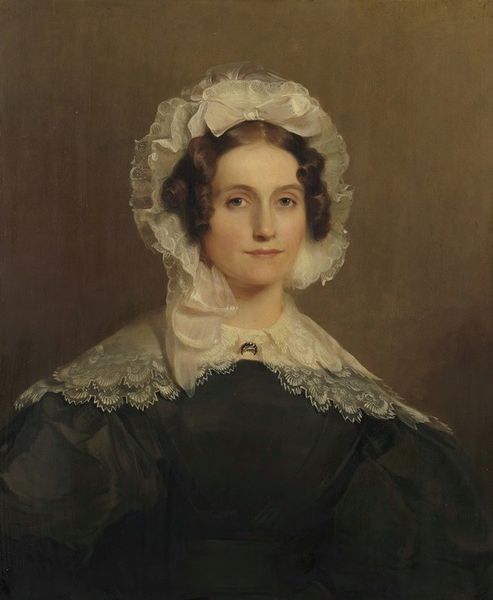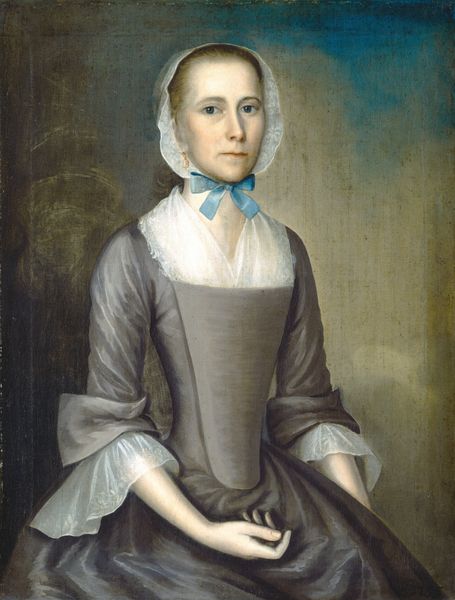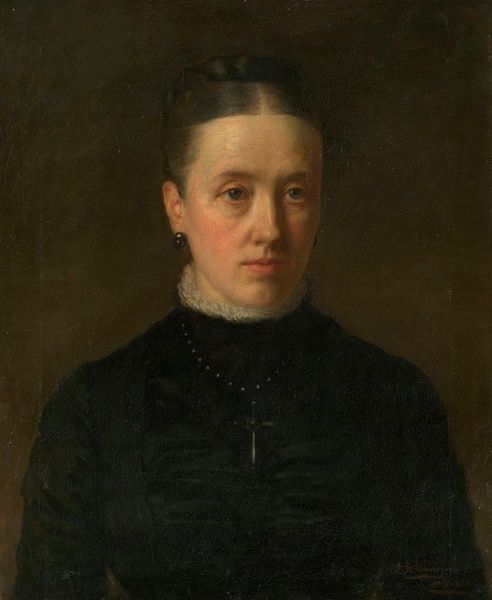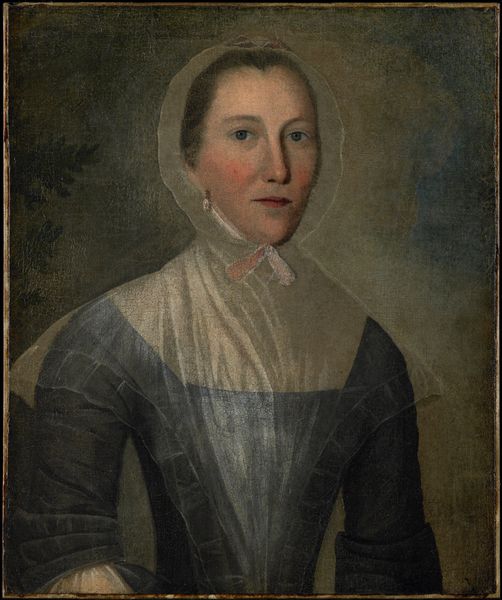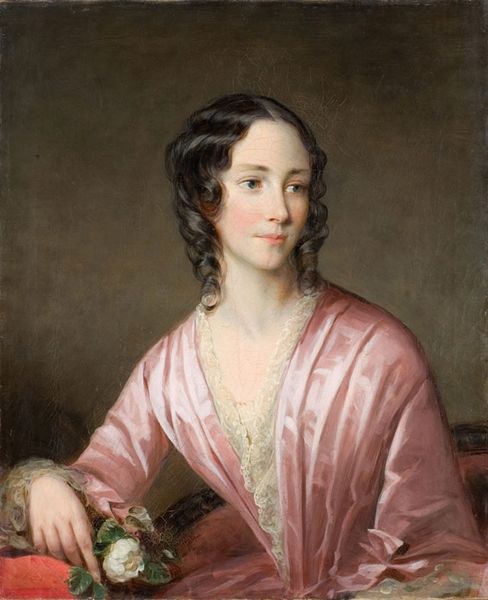
Anna Charlotte Koppelaar (geb 1821). Sedert 1850 echtgenote van Willem Frederik Wehmeyer c. 1850
0:00
0:00
painting
#
portrait
#
painting
#
romanticism
#
realism
Dimensions: height 64.5 cm, width 52 cm, height 73.1 cm, width 52 cm, depth 9.8 cm
Copyright: Rijks Museum: Open Domain
This portrait, painted by an anonymous artist, captures Anna Charlotte Koppelaar around 1850, the year she married Willem Frederik Wehmeyer. Notice the delicate lace collar and the brooch at her throat, each a marker of status and respectability. The brooch, particularly, acts as a potent symbol. It’s reminiscent of earlier amuletic traditions, where small, often circular objects were believed to ward off evil or bring good fortune. Consider, too, the countless portraits throughout history that feature similar adornments—each one a silent declaration of identity, lineage, or protection. One might recall ancient Roman cameos or even medieval reliquaries, all serving to connect the wearer to a broader narrative, a lineage, or a set of beliefs. These objects, like the images they adorn, tap into a deep reservoir of collective memory, resonating with our subconscious understanding of symbols and their power. The gaze, the attire, the very act of memorializing oneself in paint—all engage viewers on a profound, often unspoken level. This portrait, therefore, is not merely a depiction but an echo of cultural memories, continually resurfacing and evolving through time.
Comments
No comments
Be the first to comment and join the conversation on the ultimate creative platform.
